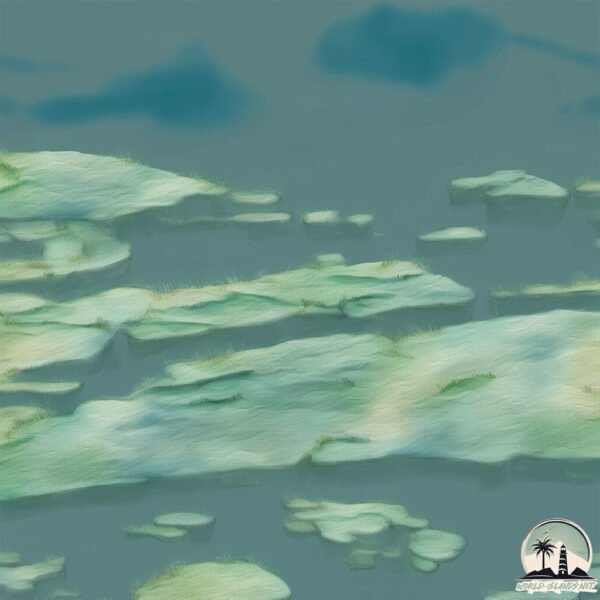Welcome to Aasiaat , a Polar island in the Davis Strait, part of the majestic Arctic Ocean. This guide offers a comprehensive overview of what makes Aasiaat unique – from its geography and climate to its population, infrastructure, and beyond. Dive into the details:
Geography and size of Aasiaat
Size: 14.4 km²Coastline: 43.8 kmOcean: Arctic OceanSea: Davis StraitContinent: North America
Aasiaat is a Medium Island spanning 14 km² with a coastline of 44 km.
Archipel: –
Tectonic Plate: North America – Covers North America and parts of the Atlantic and Arctic Oceans, characterized by diverse geological features and varying levels of seismic activity.
The geographic heart of the island is pinpointed at these coordinates:
Climate and weather of Aasiaat
Climate Zone: PolarClimate Details: TundraTemperature: Cold
Climate Characteristics: The tundra climate features long, extremely cold winters and short, cool summers. Vegetation is limited to mosses, lichens, and small shrubs due to the low temperatures and short growing seasons. Biodiversity is low, but some specialized species thrive.
Topography and nature of Aasiaat
Timezone: UTC-03:00Timezone places: America/Sao_PauloMax. Elevation: 74 m Mean Elevation: 50 mVegetation: Herbaceous CoverTree Coverage: 25%
The mean elevation is 50 m. The highest elevation on the island reaches approximately 74 meters above sea level. The island is characterized by Plains: Flat, low-lying lands characterized by a maximum elevation of up to 200 meters. On islands, plains are typically coastal lowlands or central flat areas.
Dominating Vegetation: Herbaceous Cover
Vegetation: 2 vegetation zones – Low Diversity Island
Infrastructure and Travelling to Aasiaat
Does the island have a public airport? yes .
Does the island have a major port? yes .
The mean population of Aasiaat is 206 per km². Aasiaat is Moderately Inhabited. The island belongs to Denmark .
Continuing your journey, Saqqarliit is the next notable island, situated merely km away.
Town in Greenland, Aasiaat. Day 89 of 100.
Let me show you what Greenland is really about! Music: Voyage Musician: @iksonmusic @destination diskobay #greenland ...
Town in Greenland, Aasiaat. Day 89 of 100.
Let me show you what Greenland is really about! Music: Voyage ...
Let me show you what Greenland is really about! Music: Voyage Musician: @iksonmusic @destination diskobay #greenland ...
What to do in Aasiaat, Greenland I An Outsider´s Perspective
What to do in Aasiaat, Greenland I An outsider´s perspective, or ...
What to do in Aasiaat, Greenland I An outsider´s perspective, or rather a person from Nuuk..
About Aasiaat: Aasiaat, a small ...
OX3LX Aasiaat Island Greenland. From dxnews.com
Bo, OZ1DJJ will be active again as OX3LX from Aasiaat Island, IOTA NA ...
Bo, OZ1DJJ will be active again as OX3LX from Aasiaat Island, IOTA NA - 134, Greenland, 13 - 28 February 2020.
Denmark is classified as Developed region: nonG7: Developed economies outside of the Group of Seven, characterized by high income and advanced economic structures. The level of income is High income: OECD.
News – Latest Updates and Headlines from Aasiaat
Stay informed with the most recent news and important headlines from Aasiaat. Here’s a roundup of the latest developments.
Loading...
Please note: The data used here has been primarily extracted from satellite readings. Deviations from exact values may occur, particularly regarding the height of elevations and population density. Land area and coastline measurements refer to average values at mean high tide.

